How to grow raspberries – to yield a good supply of fruit
How to grow raspberries to enjoy fruit from June right through to October
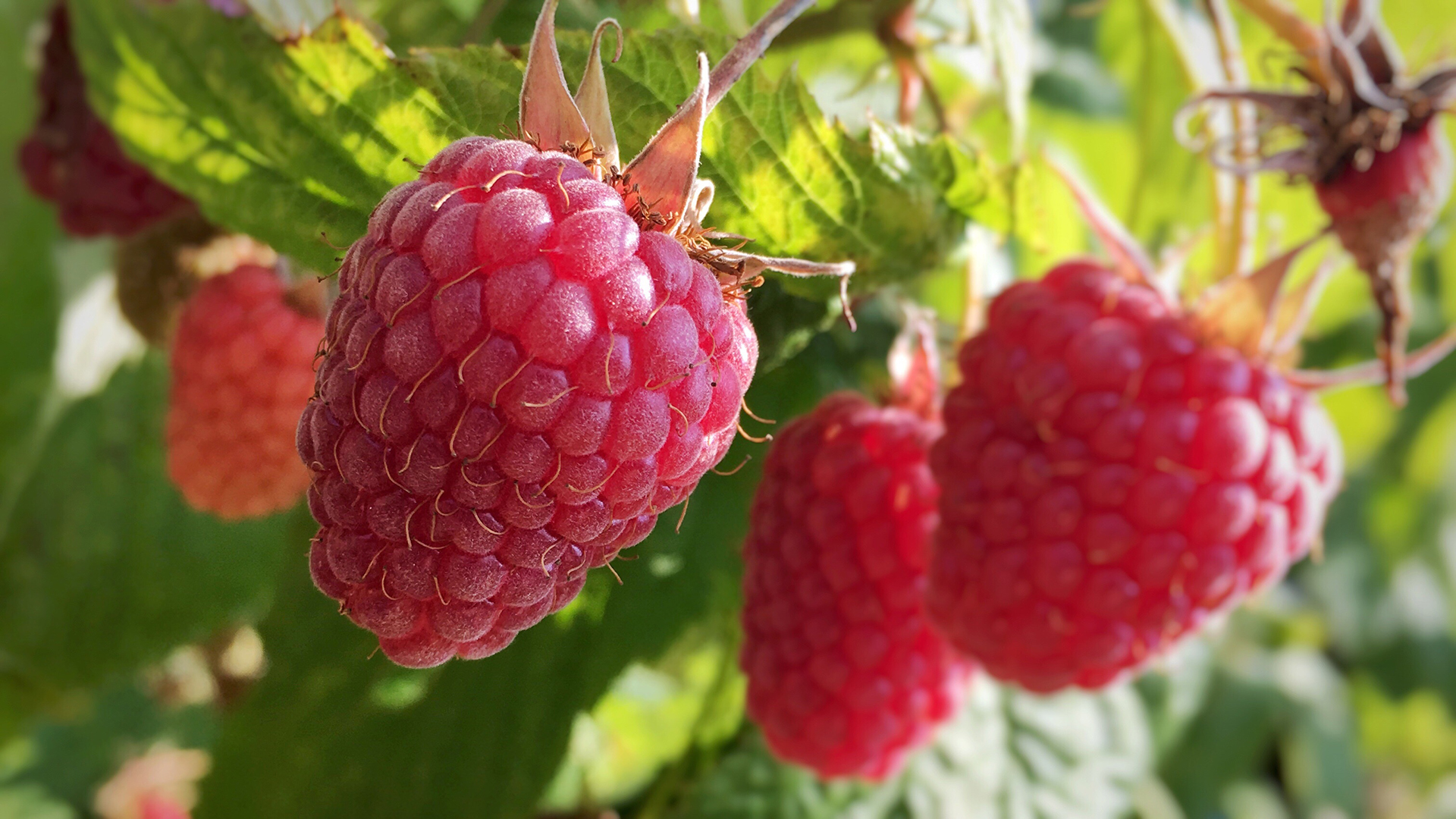
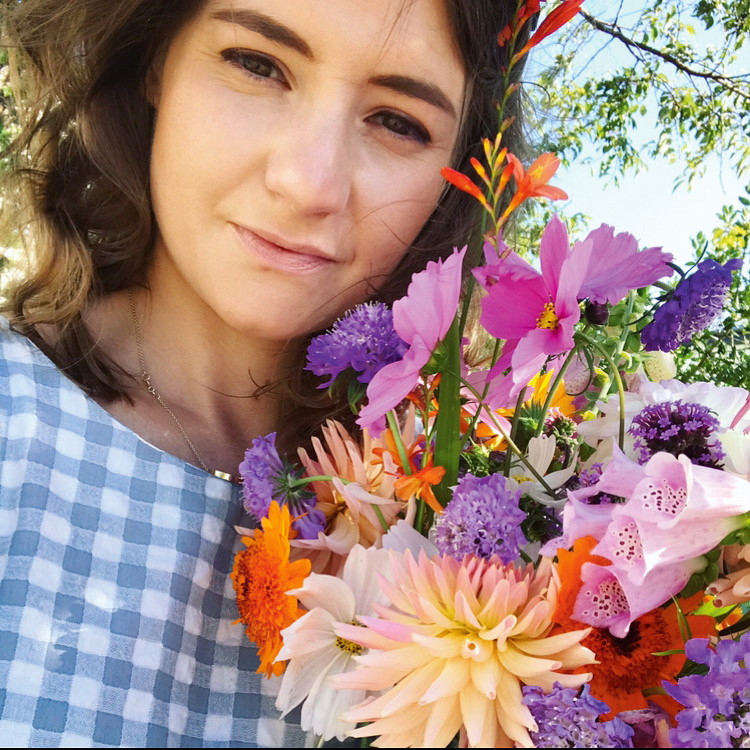
Are you wondering how to grow raspberries? What could be better on a summer’s day than a bowl of freshly picked raspberries with lashings of cream, with perhaps a meringue or two crumbled on top? Tangy and sweet, raspberries are great in so many desserts and can easily be grown yourself. Just a few bushes are all you need to yield a good supply of fruit in your kitchen garden, and if you get a glut, they do freeze very well.
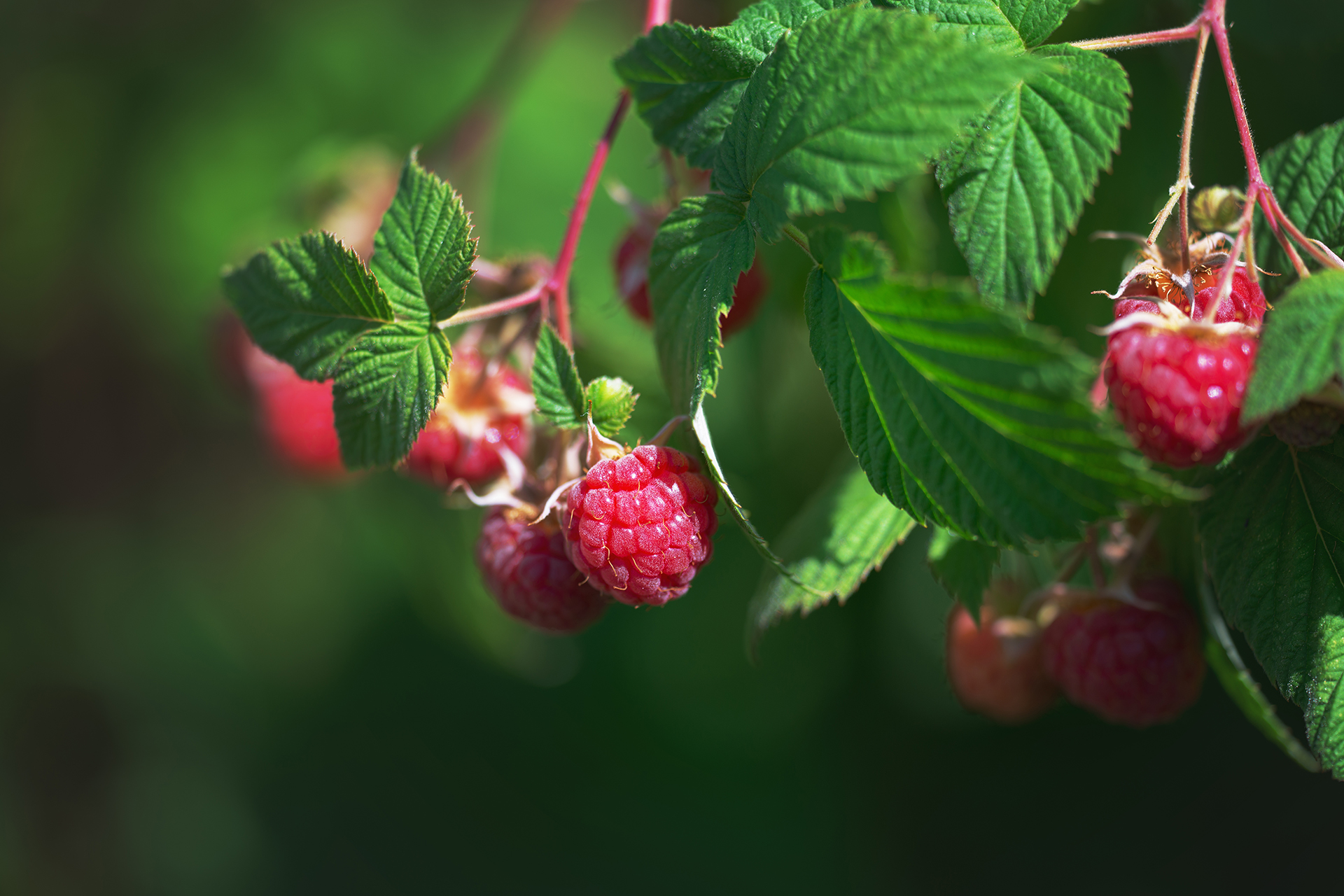
There are two types of raspberry plant – summer-fruiting, which produce fruit from June – August and fall-fruiting, which fruit from August to October, or up until the first frosts. The summer fruiting variety requires planting in rows along a supporting structure, often with a post and wire system, and has specific pruning requirements. There are also types that are ideal for vegetable container garden ideas or small vegetable garden ideas.
The fall variety, on the other hand, is more bush-like, does not require support and just needs simple annual pruning. Every year all the canes can be cut back to 5cm above the ground, ready to grow again next year. If you are short of space and time, the fall-fruiting type are considered less labour intensive and taste just as good. However, if space and time permits, it’s worth planting a few of each type if you want a plentiful supply.
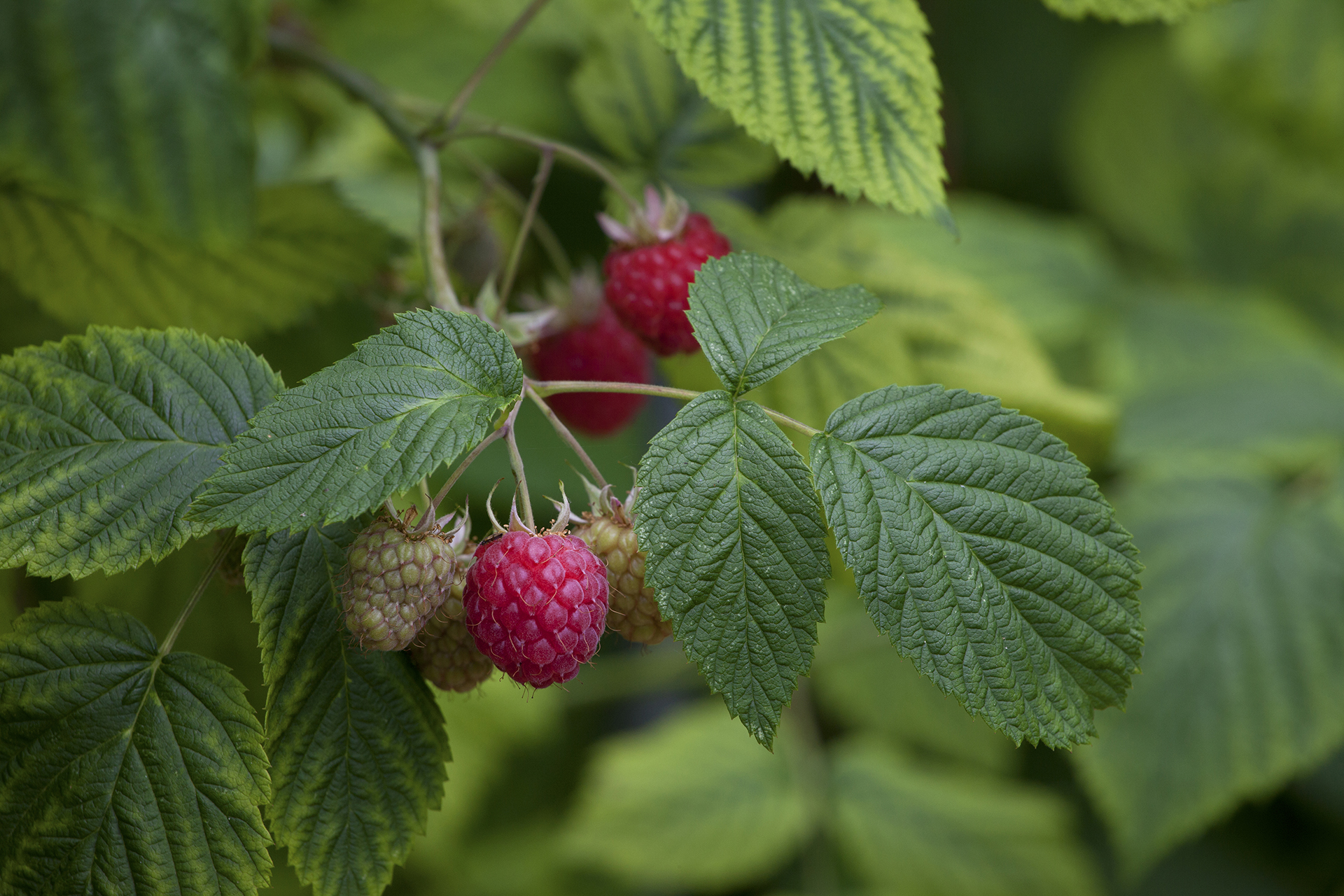
Where to grow raspberries
Raspberries thrive in cool, most conditions with free-draining fertile soils and with plenty of sun, though they can tolerate some shade. They will not do well in waterlogged soils or hot dry conditions.
‘Raspberries, like other brambles, will grow in any soil that has adequate drainage, but prefer to grow in a deep, rich, sandy-loam soil. The planting spot should get full sun (if you live in the south, mid-day shade will prevent the fruit from becoming sunscaled.) The planting spot should also have good airflow, so avoid low-lying areas and potential frost pockets. In very open areas, provide a windbreak to protect plants,’ advises Amy Enfield, horticulturist for Bonnie Plants.
Summer-fruiting raspberries need to be permanently supported, this is often achieved through a post and wire system. They also fruit on the previous season’s growth, so if you are planting new plants you will not have fruit in the first year.
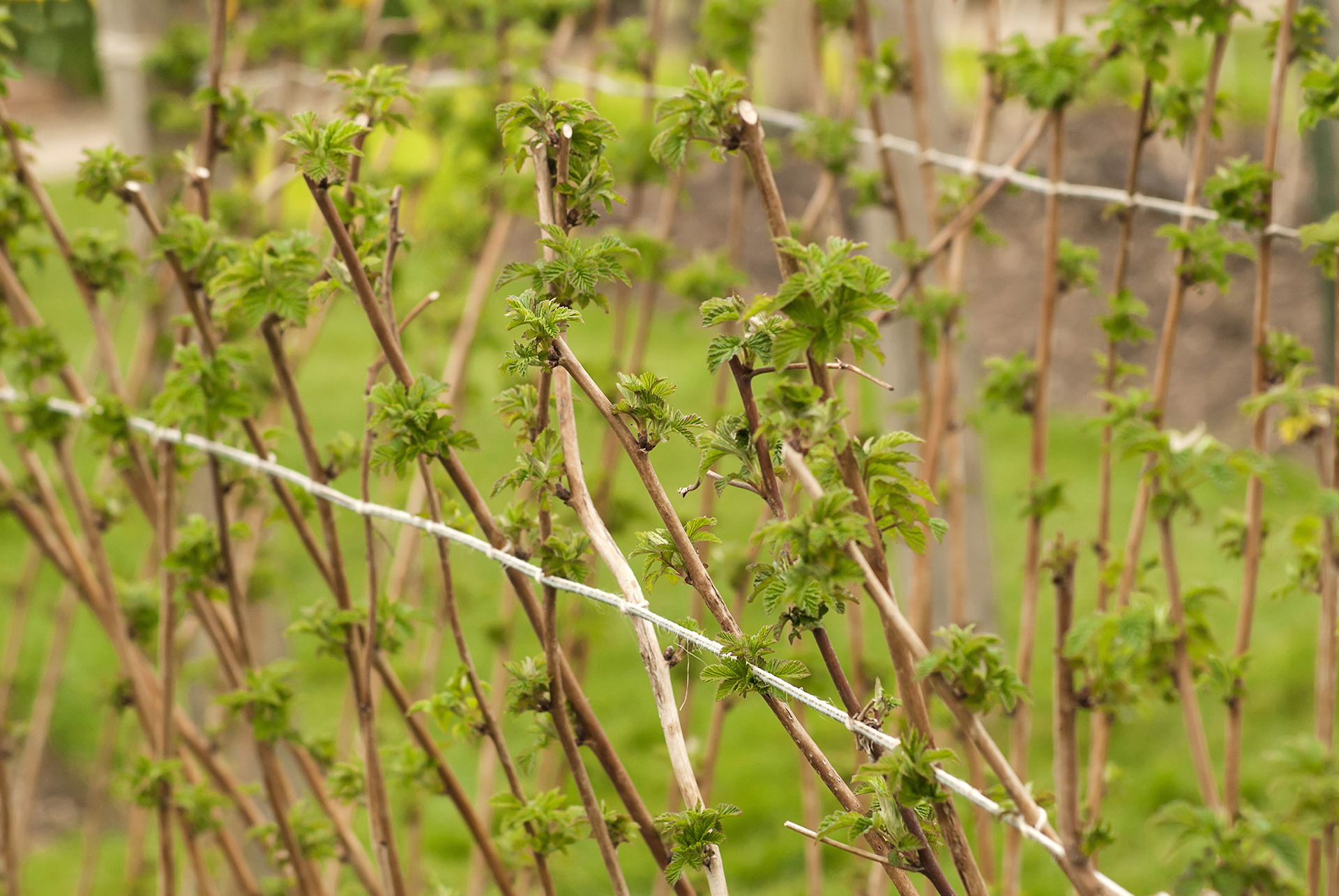
How to plant raspberries
Raspberry plants usually come in bare root form and need to be planted while they are dormant, ideally using autumn or early winter. Follow our step-by-step guide for planting summer-fruiting raspberries below.
Prepare your site:
Raspberries do not grow well in poor, dry soils, so before planting them it is important to prepare the ground by digging in planting of well rotted manure or organic matter which will bring nutrients to the soil and also help the ground retain moisture. It's also important to clear the site of any perennial weeds.
‘Raspberries like rich soil that is high in organic matter and free of weeds (young plants do not compete well with weeds.) They should be planted 2-3 feet apart in rows that are 5 feet apart. Red raspberries can spread at least a foot per year.’ says Amy Enfield, horticulturist for Bonnie Plants.

Build your structure:
Raspberries need permanent support, so before planting them you need to create your supporting structure. Often this takes the form of a post and wire structures set in rows 1.5m apart, ideally running north to south to maximise sunlight. Create the post structure by driving in 2.5m wooden posts at 1.8m intervals, then, stretch three thick wires across the posts at three different height intervals, around 60cm apart.
Plant your raspberries
Once the ground has been prepared, and the structure is in place, you can then plant your raspberries. Dig a trench around 5-8cm deep and plant the raspberries at 60cm intervals along the base of the post structure, spreading out the roots carefully. Backfill with soil and water.
Prune and train your raspberries
Once planted prune the canes to around 25cm from the ground, snipping just above a bud. In mid-summer, once your raspberry plants have established new canes, the original canes can be cut back to the ground. The new canes are the ones that will bear fruit the following year.
In summer, the best six canes of the current year’s growth should then be selected and tied into the supporting structure at around 90cm, with each cane spaced around 8-10cm. Any damaged or weak canes can be removed, as well as those that have sprouted over 22cm from the plant.
Autumn-fruiting varieties should be planted in the same way and at the same time, but do not require the supporting structure.

How to prune raspberries
Raspberries require pruning to keep them fruiting well. Summer-fruiting and autumn-fruiting raspberries require different pruning methods.
Once summer-fruiting raspberries have fruited, all the old brown fruiting canes can be cut back to the ground. At this stage, the best six canes of the current year’s growth should then be selected and tied into the supporting structure, with each cane spaced around 8-10cm. They should be around 90cm high. Any damaged or weak canes, or those more than 22cm from the row, should be cut out to maximise light and airflow between the remaining canes.
In the spring the raspberries can be trimmed to around 15cm above the top wire, removing any frost damage.
With fall-fruiting raspberries, all the canes can be cut back to the ground after fruiting ready to regrow in spring.
Caring for raspberries
Raspberries do not like dry conditions as they have shallow roots, so keep them well watered in hot weather.
‘During the actively growing months of late-spring and summer, keep the soil moist but not soggy. Drip irrigation or soaker hoses work great for water raspberries and keeps the foliage dry,’ advises Amy Enfield, horticulturist for Bonnie Plants.
In spring mulch it is also recommended to the plants with a layer of compost or leaf mould to help the ground retain moisture.
'Raspberry roots really don’t like the heat of the summer, so if you’re looking to prolong the life of your patch, I recommend mulching them and treating the raspberries with a preventative fungicide,' advises Venelin Dimitrov, Senior Product Manager at Burpee.
What is the best month to plant raspberries?
Raspberries are best planted whilst dormant during fall or early winter.
Is raspberry easy to grow?
There are two kinds of raspberry – summer-fruiting and fall-fruiting. The summer fruiting are generally seen as more labour intensive than the fall variety. For raspberries that are easy to grow, opt for the autumn variety – these fruit in the first year, require no support system and have simple pruning needs – simply cut them back to 5cm above the ground after fruiting and they are ready to go again next year.
Sign up to the Homes & Gardens newsletter
Design expertise in your inbox – from inspiring decorating ideas and beautiful celebrity homes to practical gardening advice and shopping round-ups.

Pippa is a contributor to Homes & Gardens. A graduate of Art History and formerly Style Editor at Period Living, she is passionate about architecture, creating decorating content, interior styling and writing about craft and historic homes. She enjoys searching out beautiful images and the latest trends to share with the Homes & Gardens audience. A keen gardener, when she’s not writing, you’ll find her growing flowers on her yard for styling projects.
-
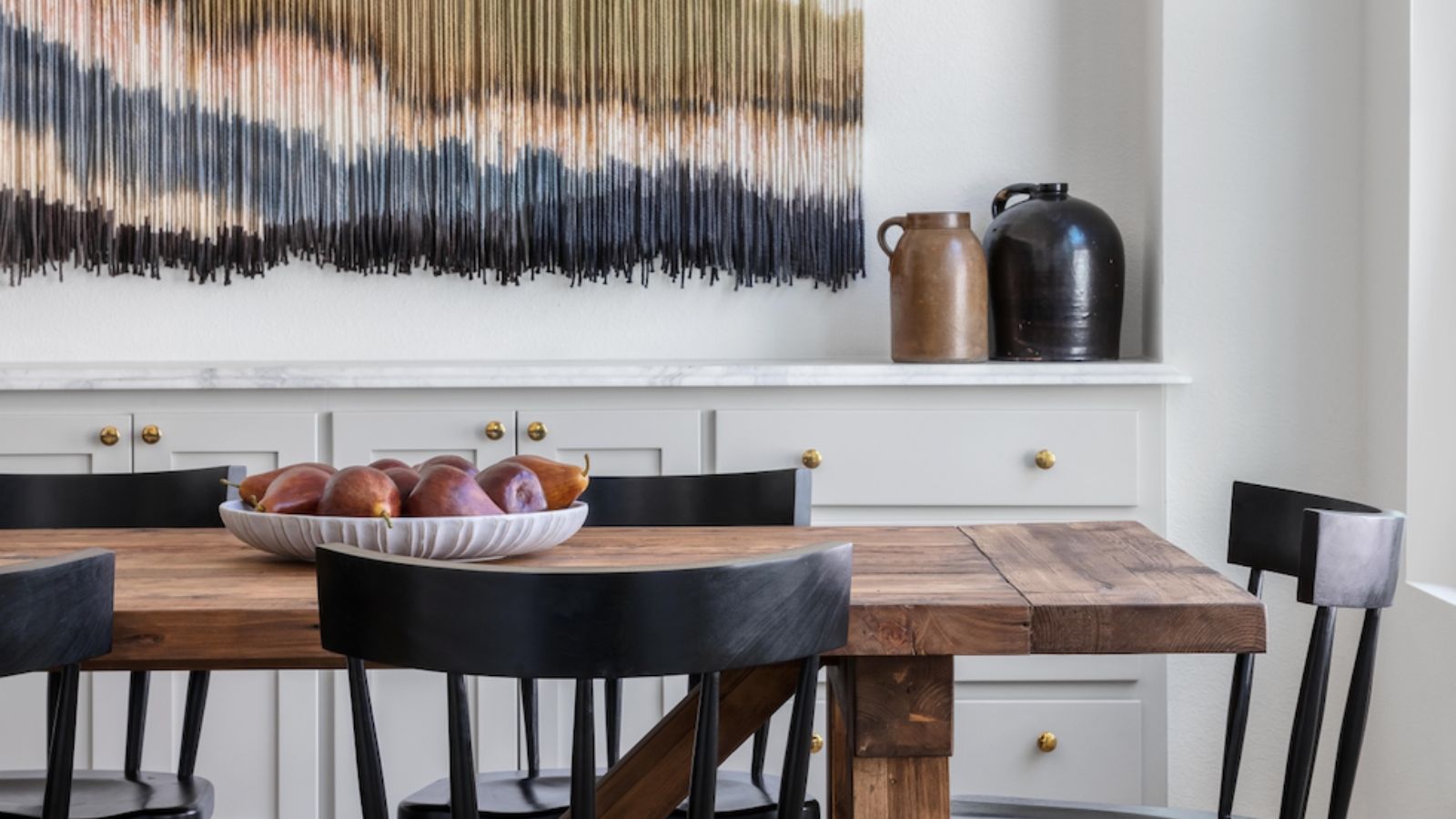 How the 'ODT' method can help you to tackle your overwhelming decluttering checklist – and streamline the process from start to finish
How the 'ODT' method can help you to tackle your overwhelming decluttering checklist – and streamline the process from start to finishAvoid 'analysis paralysis' and tick off tasks quickly and easily by making just one decision at a time
By Ottilie Blackhall Published
-
 Experts say to only use homemade compost after testing it with this fail-safe method – they say it will guarantee healthy soil and support plant growth
Experts say to only use homemade compost after testing it with this fail-safe method – they say it will guarantee healthy soil and support plant growthSimply grab some fast-growing seeds and observe how they germinate in your compost
By Tenielle Jordison Published
-
 Water garden ideas – 9 ways to introduce soothing water to your outdoor space
Water garden ideas – 9 ways to introduce soothing water to your outdoor spaceFrom cascading fountains to wildlife ponds, there are plenty of ways to create a tranquil water garden
By Leigh Clapp Published
-
 How to grow poppies
How to grow poppiesFind out how to grow poppies to enjoy the beauty of these brightly colored tissue paper-like blooms
By Leigh Clapp Published
-
 How to grow delphiniums from seed
How to grow delphiniums from seedFind out how to grow delphiniums from seed and enjoy these colorful cottage garden favorites filling beds and borders
By Leigh Clapp Published
-
 How to grow ferns – when and how to plant and care for them
How to grow ferns – when and how to plant and care for themLearn how to grow ferns to enjoy the texture and form of these versatile plants in many areas of your garden
By Leigh Clapp Published
-
 How to grow sweet peas from seed – in borders and pots
How to grow sweet peas from seed – in borders and potsFind out how to grow sweet peas and where to enjoy their wonderful color, ruffled blooms and sweet fragrance in your garden
By Pippa Blenkinsop Published
-
 How to make fat balls for birds – easy steps feed our feathered friends
How to make fat balls for birds – easy steps feed our feathered friendsLearn how to make fat balls for birds to ensure their wellbeing throughout the winter
By Holly Reaney Published
-
 Planning a kitchen garden – from layouts to picking the best crops
Planning a kitchen garden – from layouts to picking the best cropsPlanning a kitchen garden is easy with this expert advice – whether yours is in beds, borders or a dedicated patch – you're guaranteed success
By Leigh Clapp Published
-
 How to grow cosmos – expert tips on when and where to plant these flowers
How to grow cosmos – expert tips on when and where to plant these flowersLearn how to grow cosmos to add bright color in your garden from summer through to fall with their beautiful blooms
By Leigh Clapp Published